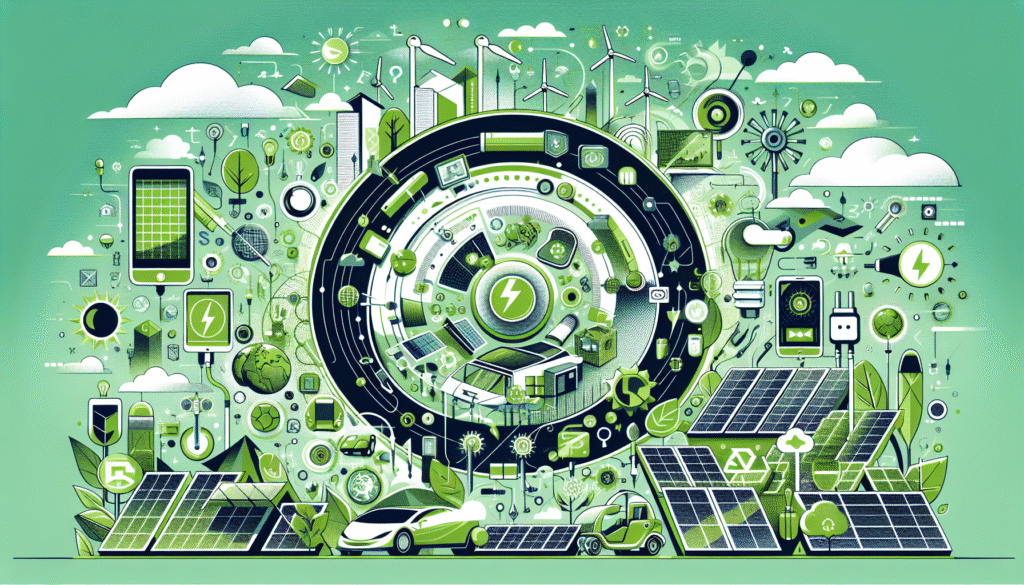
The Rise of Sustainable Technology: A Green Revolution
Keywords: sustainable technology, green tech, eco-friendly technology, environmental technology, renewable energy, circular economy, sustainable development, climate change solutions, energy efficiency, waste reduction
Sustainable technology, often referred to as “green tech” or “clean tech,” encompasses a broad range of innovations designed to address pressing environmental challenges. Driven by growing awareness of climate change, resource depletion, and pollution, the demand for sustainable solutions has surged, propelling the rise of this transformative sector.
Forces Driving the Growth of Sustainable Technology
Several key factors contribute to the increasing adoption of sustainable technology. Foremost among these is the escalating threat of climate change. As extreme weather events become more frequent and intense, governments, businesses, and individuals are recognizing the urgency of reducing greenhouse gas emissions. This has led to stricter environmental regulations, incentivizing the development and deployment of cleaner technologies.
Alongside climate concerns, resource scarcity is another significant driver. The finite nature of fossil fuels and critical minerals has spurred innovation in areas like renewable energy, resource recovery, and material science. The circular economy model, which emphasizes reuse, repair, and recycling, is gaining traction as a way to minimize waste and maximize resource utilization.
Consumer demand also plays a crucial role. Increasingly, consumers are prioritizing eco-friendly products and services, pushing businesses to adopt sustainable practices throughout their supply chains. This shift in consumer behavior creates market opportunities for companies offering sustainable alternatives.
Key Areas of Sustainable Technology Development
Renewable Energy: Harnessing power from the sun, wind, water, and geothermal sources is central to sustainable development. Solar photovoltaic (PV) technology has seen dramatic cost reductions, making it increasingly competitive with traditional energy sources. Wind energy is another rapidly growing sector, with advancements in turbine technology boosting efficiency and output. Hydropower remains a significant source of renewable energy, while geothermal energy offers a consistent and reliable baseload power option.
Energy Efficiency: Reducing energy consumption is as important as generating clean energy. Smart grids, building automation systems, and energy-efficient appliances are all playing a role in optimizing energy use. Advances in insulation materials and building design are also contributing to lower energy demands in the built environment.
Sustainable Transportation: The transportation sector is a major contributor to greenhouse gas emissions. Electric vehicles (EVs) are rapidly gaining popularity, driven by improvements in battery technology and charging infrastructure. Hydrogen fuel cell vehicles offer another promising alternative for zero-emission transportation. Furthermore, investments in public transportation, cycling infrastructure, and pedestrian-friendly urban planning are promoting sustainable mobility.
Waste Management and Recycling: Sustainable waste management aims to minimize waste generation and maximize resource recovery. Advanced recycling technologies, such as chemical recycling and pyrolysis, are enabling the recovery of valuable materials from waste streams that were previously considered unrecyclable. Composting and anaerobic digestion are also effective methods for diverting organic waste from landfills and generating renewable energy.
Sustainable Agriculture: Modern agricultural practices often have significant environmental impacts. Sustainable agriculture seeks to minimize these impacts by employing techniques such as crop rotation, cover cropping, and integrated pest management. Precision agriculture, using technology like sensors and drones, allows for targeted application of fertilizers and pesticides, reducing waste and environmental damage.
Green Building and Construction: Sustainable building practices prioritize energy efficiency, resource conservation, and indoor environmental quality. Green building certifications, such as LEED and BREEAM, provide frameworks for designing and constructing environmentally responsible buildings. The use of sustainable building materials, like bamboo and recycled plastic, is also gaining traction.
Water Management and Conservation: Water scarcity is a growing concern in many regions. Sustainable water management practices aim to conserve water resources and improve water quality. Technologies such as desalination, wastewater treatment, and smart irrigation systems are crucial for addressing water challenges.
Challenges and Opportunities in Sustainable Technology
While the rise of sustainable technology offers tremendous opportunities, several challenges remain. The upfront costs of implementing some sustainable technologies can be significant, although these costs are often offset by long-term savings. Furthermore, integrating new technologies into existing infrastructure can be complex. Policy support and regulatory frameworks play a vital role in overcoming these barriers and accelerating the transition to a more sustainable future.
The Future of Sustainable Technology
The future of sustainable technology is bright. Continued innovation and investment are driving down costs and improving the performance of green technologies. Artificial intelligence (AI) and machine learning are playing an increasing role in optimizing energy systems, managing resources, and developing new sustainable materials. As awareness of environmental issues grows and technological advancements continue, sustainable technology will become increasingly integrated into every aspect of our lives, paving the way for a more sustainable and resilient future.















